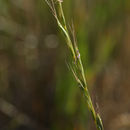en
names in breadcrumbs


This taxon is found in the Palouse grasslands, among other North American ecoregions. The Palouse ecoregion extends over eastern Washington, northwestern Idaho and northeastern Oregon. Grasslands and savannas once covered extensive areas of the inter-mountain west, from southwest Canada into western Montana in the USA. Today, areas like the great Palouse prairie of easternare virtually eliminated as natural areas due to conversion to rangeland. The Palouse, formerly a vast expanse of native wheatgrasses (Agropyron spp), Idaho Fescue (Festuca idahoensis), and other grasses, has been mostly plowed and converted to wheat fields or is covered by Drooping Brome (Bromus tectorum) and other alien plant species.
the Palouse historically resembled the mixed-grass vegetation of the Central grasslands, except for the absence of short grasses. Such species as Bluebunch Wheatgrass (Elymus spicatus), Idaho Fescue (Festuca idahoensis) and Giant Wildrye (Elymus condensatus) and the associated species Lassen County Bluegrass (Poa limosa), Crested Hairgrass (Koeleria pyramidata), Bottlebrush Squirrel-tail (Sitanion hystrix), Needle-and-thread (Stipa comata) and Western Wheatgrass (Agropyron smithii) historically dominated the Palouse prairie grassland.
Representative mammals found in the Palouse grasslands include the Yellow-bellied Marmot (Marmota flaviventris), found burrowing in grasslands or beneath rocky scree; American Black Bear (Ursus americanus); American Pika (Ochotona princeps); Coast Mole (Scapanus orarius), who consumes chiefly earthworms and insects; Golden-mantled Ground Squirrel (Spermophilus lateralis); Gray Wolf (Canis lupus);Great Basin Pocket Mouse (Perognathus parvus); Northern River Otter (Lontra canadensis); the Near Threatened Washington Ground Squirrel (Spermophilus washingtoni), a taxon who prefers habitat with dense grass cover and deep soils; and the Northern Flying Squirrel (Glaucomys sabrinus), a mammal that can be either arboreal or fossorial.
There are not a large number of amphibians in this ecoregion. The species present are the Great Basin Spadefoot Toad (Spea intermontana), a fossorial toad that sometimes filches the burrows of small mammals; Long-toed Salamander (Ambystoma macrodactylum); Northern Leopard Frog (Glaucomys sabrinus), typically found near permanent water bodies or marsh; Columbia Spotted Frog (Rana luteiventris), usually found near permanent lotic water; Pacific Treefrog (Pseudacris regilla), who deposits eggs on submerged plant stems or the bottom of water bodies; Tiger Salamander (Ambystoma tigrinum), fossorial species found in burrows or under rocks; Woodhouse's Toad (Anaxyrus woodhousii), found in arid grasslands with deep friable soils; Western Toad (Anaxyrus boreas), who uses woody debris or submerged vegetation to protect its egg-masses.
There are a limited number of reptiles found in the Palouse grasslands, namely only: the Northern Alligator Lizard (Elgaria coerulea), often found in screes, rock outcrops as well as riparian vicinity; the Painted Turtle (Chrysemys picta), who prefers lentic freshwater habitat with a thick mud layer; Yellow-bellied Racer (Chrysemys picta); Ringneck Snake (Diadophis punctatus), often found under loose stones in this ecoregion; Pygmy Short-horned Lizard (Phrynosoma douglasii), a fossorial taxon often found in bunchgrass habitats; Side-blotched Lizard (Uta stansburiana), frequently found in sandy washes with scattered rocks; Southern Alligator Lizard (Elgaria multicarinata), an essentially terrestrial species that prefers riparian areas and other moist habitats; Pacific Pond Turtle (Emys marmorata), a species that usually overwinters in upland habitat; Western Rattlesnake (Crotalus viridis), who, when inactive, may hide under rocks or in animal burrows; Night Snake (Hypsiglena torquata); Western Skink (Plestiodon skiltonianus), who prefers grasslands with rocky areas; Western Terrestrial Garter Snake (Thamnophis elegans), found in rocky grasslands, especially near water; Rubber Boa (Charina bottae).